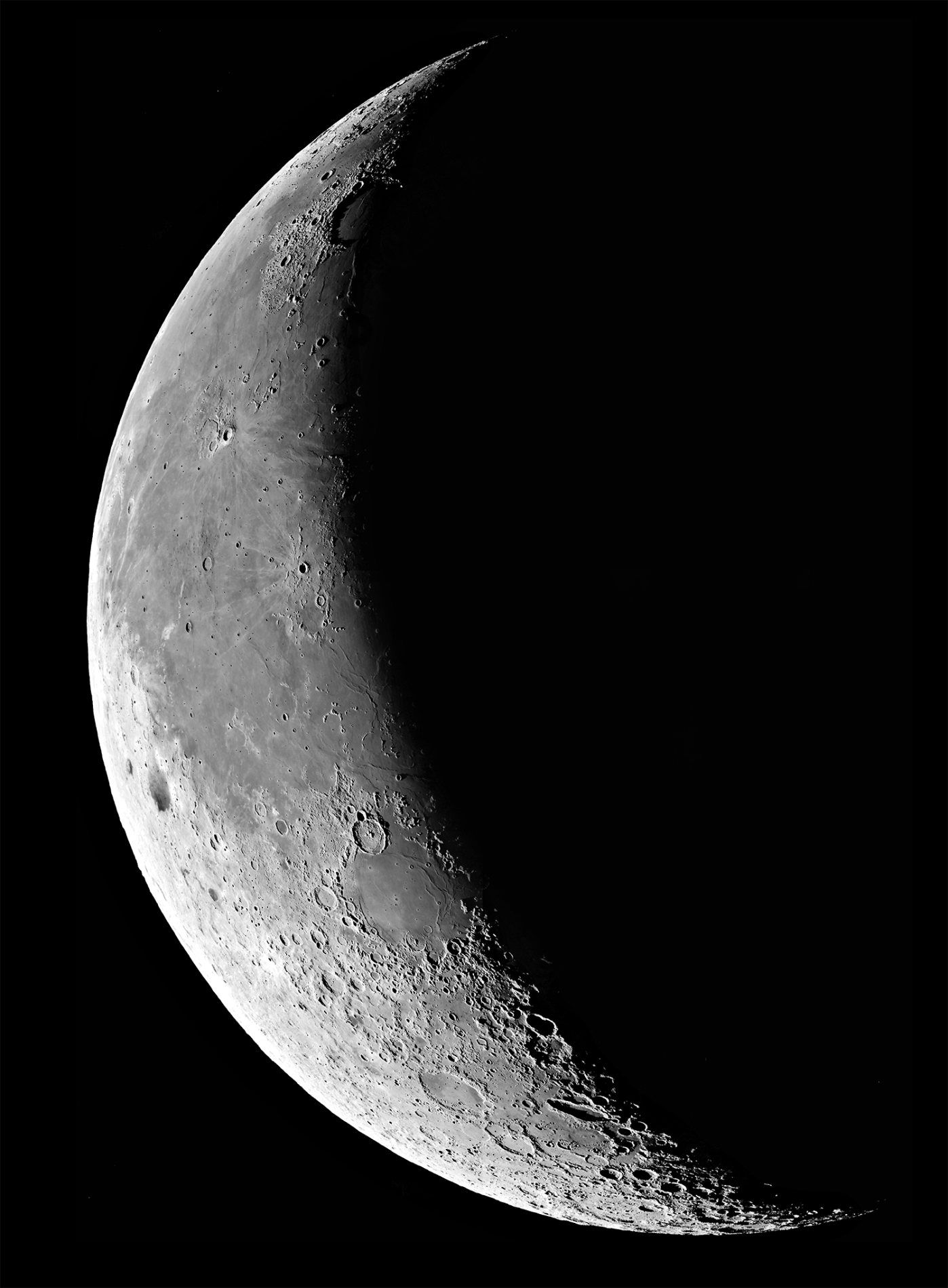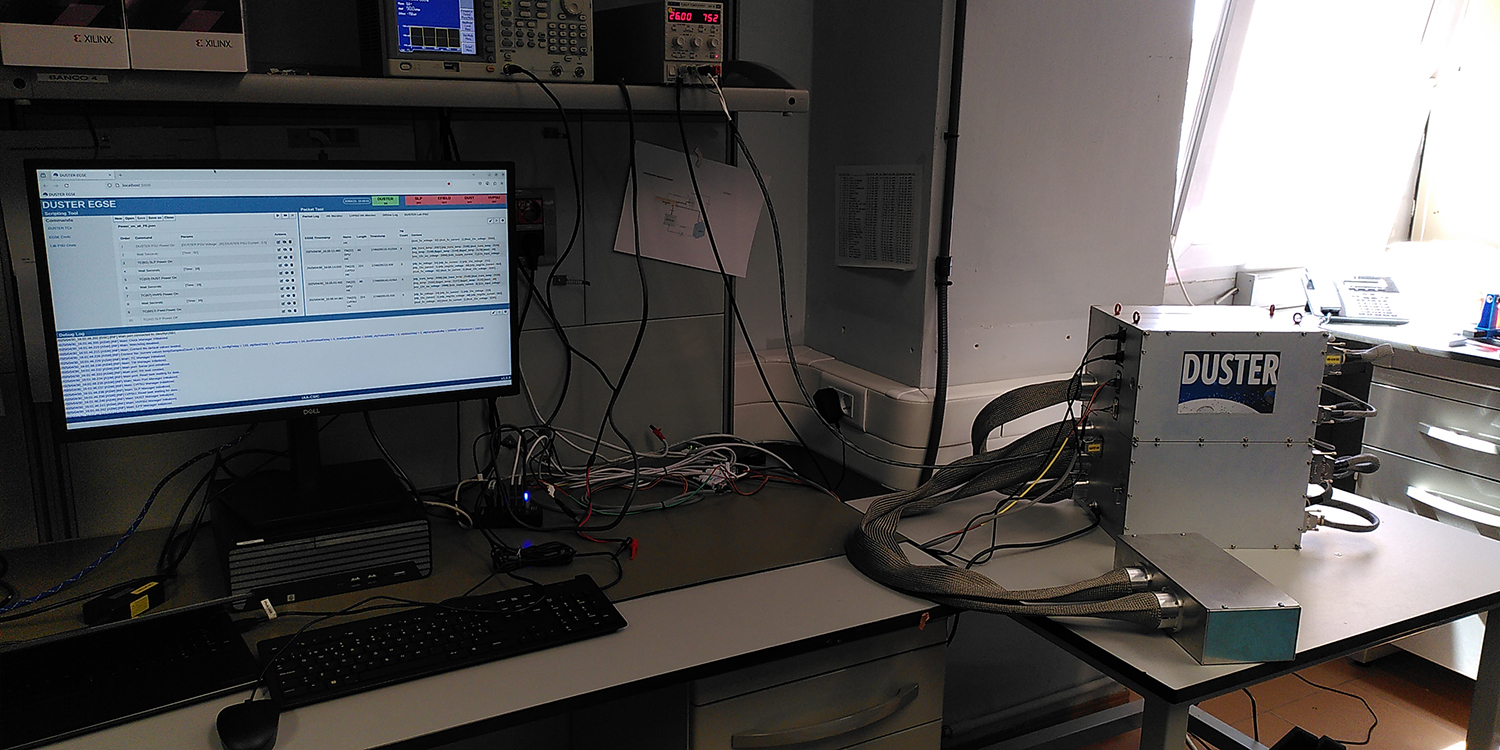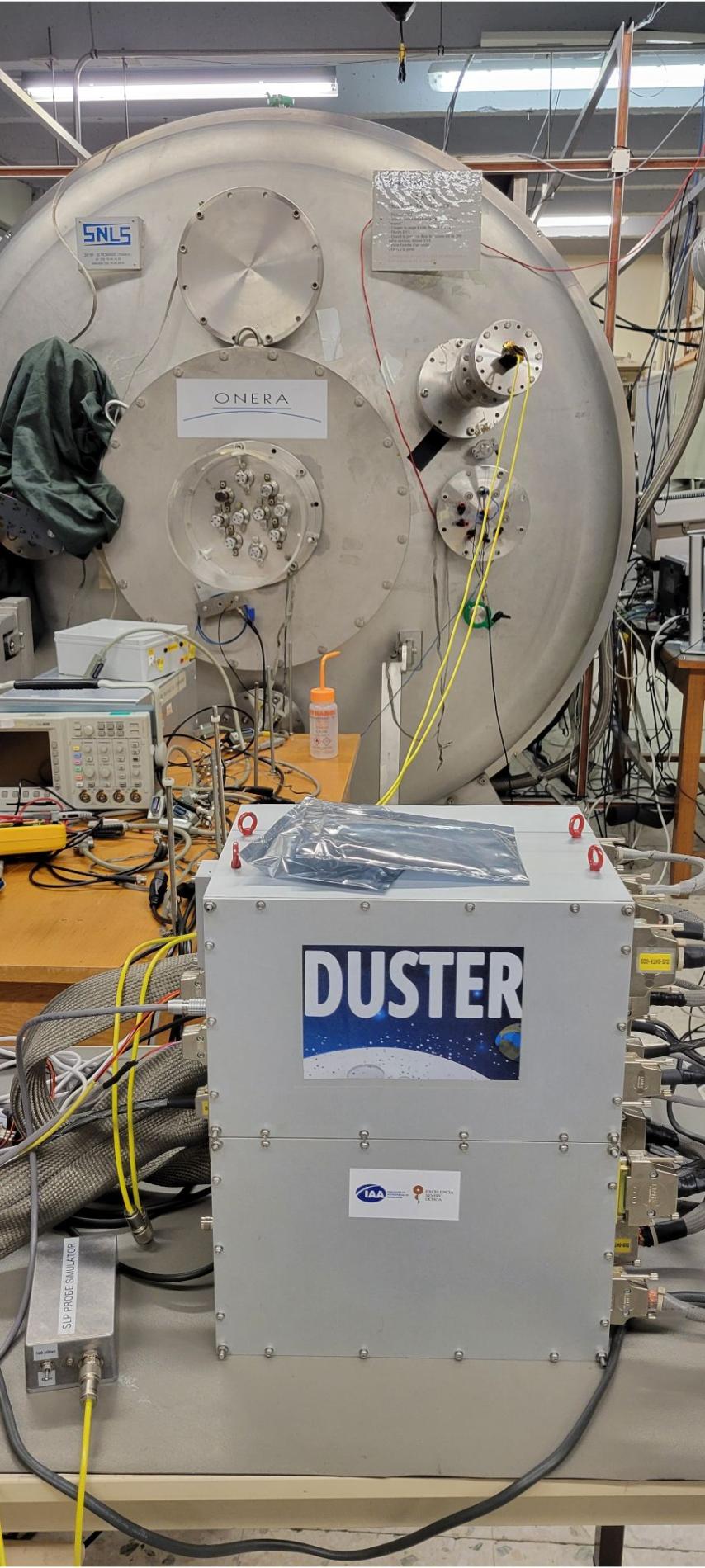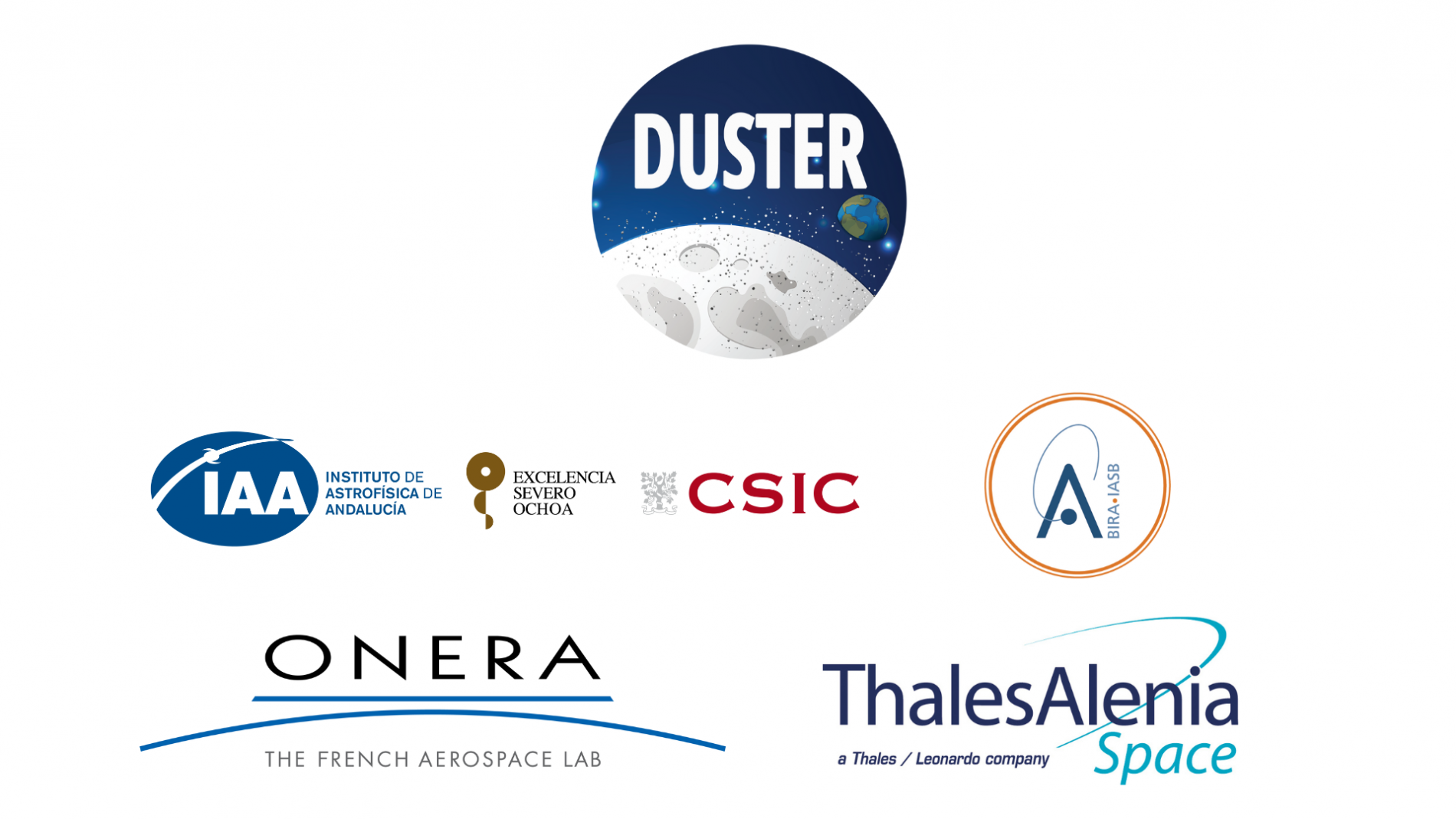The DUSTER project successfully passes final review and makes progress on lunar dust control
The validated instrument will help develop technologies to protect astronauts and equipment in future space missions
The Instituto de Astrofísica de Andalucía (IAA-CSIC) is responsible for designing and integrating the electronics and software of DUSTER, a key tool for understanding and mitigating the effects of lunar dust
As missions prepare to return to the Moon, one of the major challenges facing space exploration is lunar dust. These tiny, electrically charged particles pose risks both to human health and to the performance of instruments and equipment on the lunar surface.
In this context, the European project DUSTER—Dust Study, Transport, and Electrostatic Removal for Exploration Missions—aims to better understand the behavior of charged dust and to develop tools to manage it. The project involves scientists and engineers from the Instituto de Astrofísica de andalucía (IAA-CSIC).

Waning moon. Credit: ESO/D. Baade
In June, DUSTER successfully passed its final review, a process conducted by experts and advisors from the European Commission, who praised the progress made and provided final guidelines for completing the project. “In conclusion, all the objectives and milestones are expected to be achieved by the end of the project,” says Carmen Pastor, engineer at the Technology Development and Instrumentation Unit (UDIT) at the IAA-CSIC. “Moreover, we have reached Technology Readiness Level 4 (TRL 4)—where TRL 9 represents a fully completed space mission—for all components of the system, as initially planned.”
THE CHALLENGE OF CONTROLLING CHARGED DUST PARTICLES
The dust studied in DUSTER is extremely fine—just a few thousandths of a millimeter—and carries an electrical charge that makes it cling strongly to any surface. To move these particles in a controlled way, the system generates electric fields that push the dust in different directions, while specialized electrodes measure the resulting electrical currents.
The behavior of the dust varies depending on the space environment. “On the Moon, for example, dust on the sunlit side becomes positively charged, while on the dark side it becomes negatively charged. Local gravity—which is very different on the Moon, Mars, or asteroids—also affects this charging process,” explains Rosario Sanz, project engineer at the IAA-CSIC.
The experiments provide key data on electric charge, temperature, and the electric field on the dust-covered surface, using instruments such as Langmuir probes—which measure plasma parameters—electric field probes, and electrodes designed to move and detect the movement of charged particles.
A KEY INSTRUMENT FOR STUDYING LUNAR DUST
The DUSTER consortium includes the Royal Belgian Institute for Space Aeronomy (BIRA), the Institute of Astrophysics of Andalusia (IAA-CSIC), the French Aerospace Lab (ONERA), and Thales Alenia Space Spain (TAS-E).
In less than two years, the international team has developed and validated an instrument capable of studying lunar dust inside a vacuum chamber that simulates lunar surface conditions. The tests used lunar regolith simulant—dust that mimics the powdery layer covering the Moon—and ultraviolet lamps that reproduce solar radiation.
The IAA-CSIC played a central role in designing and building the instrument’s electronics and control systems. Notable contributions include the development of the central processing unit—which governs the instrument and handles scientific data acquisition—along with the low-voltage power supply, cable harness, and mechanical and thermal design of the electronics housing.
The institute also developed the software, both for onboard control and communication with the instrument, and carried out its integration and testing at its own facilities. “We completed the integration in record time to meet the project schedule, overcoming a significant challenge thanks to the close collaboration across the consortium,” says Carmen Pastor (UDIT/IAA-CSIC).

Integration of DUSTER in the IAA-CSIC. Credit: Carmen Pastor (IAA-CSIC)
BIRA designed part of the electronics—acquisition and control boards for the three probes as well as the high-voltage power supply—and developed the Langmuir and electric field probes. ONERA led the vacuum chamber tests and designed the electrodes that move and measure the dust particles.
“The experiments helped us better understand how lunar dust becomes electrically charged and how to control it using electric fields,” says Remi Pacaud, scientist at ONERA. Using UV light to simulate sunlight, the team managed to charge the dust positively or negatively and measure the electric charge of individual particles—establishing an experimental protocol to characterize dust in lunar conditions.
These results pave the way for new technologies to mitigate the impact of lunar dust on future missions, protecting both equipment and astronaut health.

DUSTER with the probes inside the JONAS vacuum chamber. Credit: ONERA
PREPARING THE NEXT STEPS
With the final review completed, the project is now poised for the next phase. “Our initial goal was to deliver a fully functional instrument capable of measuring dust properties in situ. Thanks to its maturity and proven viability, we are in a strong position to deploy it in a future space mission,” explains Julio Rodríguez, IAA-CSIC researcher and coordinator of the institute’s role in DUSTER.
The immediate next steps include testing the instrument under microgravity conditions using parabolic flights, as well as planning for future space missions to further refine the design. A key focus is reducing the instrument’s size and weight to facilitate its integration into lunar landers or habitats.
This progress opens up opportunities for applying the technology in a range of environments—on the Moon, Mars, asteroids, or comets—supporting the development of solutions to one of space exploration’s fundamental challenges: controlling charged dust.
“We’re also actively exploring upcoming space exploration missions where an improved version of DUSTER could be deployed, either operated by astronauts or functioning autonomously. We’re optimizing its design to reduce power consumption, size, and weight,” concludes Julio Rodríguez (IAA-CSIC).

- Dust Study, Transport, and Electrostatic Removal for Exploration Missions
- https://duster.aeronomie.be/
- Julio Rodríguez - julio@iaa.es
- Rosario Sanz - sanz@iaa.es
- Carmen Pastor- pastor@iaa.es
- Instituto de Astrofísica de Andalucía (IAA-CSIC)
- Unidad de Divulgación y Comunicación
- Amanda López – alm@iaa.es
- Emilio García – garcia@iaa.es - 649 407 445 (vía whatssap)
- Celia Navas - navas@iaa.es
- https://www.iaa.csic.es
- https://divulgacion.iaa.csic.es

